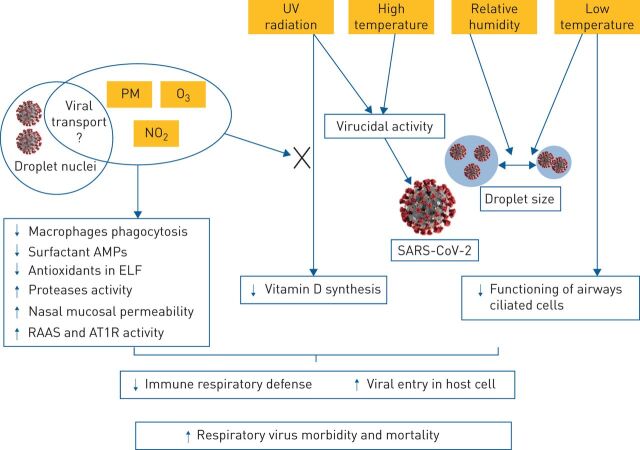FIGURE 2.
Air pollutants/virus interaction according to atmospheric conditions. Relative humidity plays a role in the desiccation or hydration of viral droplet and, thus, influences the size of the droplet and the persistence of respiratory viruses in the air. Solar ultraviolet (UV) radiations have in vitro antiviral activity and lead to an increase in vitamin D synthesis. Atmospheric air pollutants may lead to decreased UV penetration leading to reduced vitamin D synthesis. Temperature influences the size of the viral droplet. In addition, low temperatures decrease the functioning of airways ciliated cells, while high temperatures may have antiviral activity. Droplet nuclei refers to viral droplets ≤5μm, it is also called viral airborne or viral aerosol. In addition to the common effect of air pollutants, which lead to a decrease in immune respiratory defence, particulate matter (PM) may be involved in respiratory virus transport. AMP: antimicrobial proteins and peptides; ELF: epithelial lining fluid; RASS: renin-angiotensin-aldosterone system; AT1R: angiotensin 2 receptor type 1.

